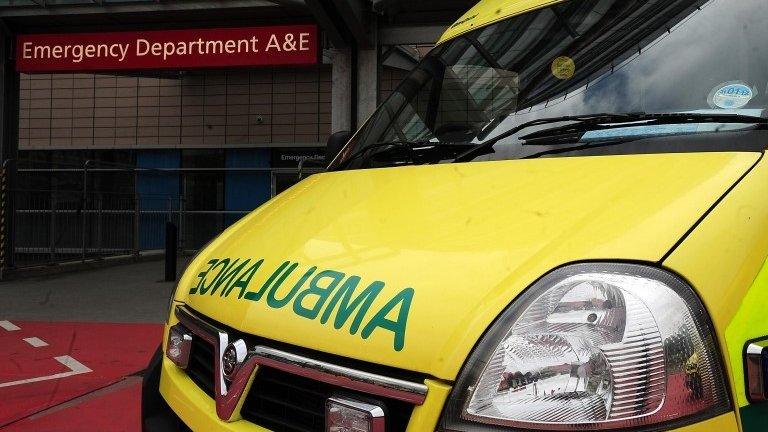NHS admissions: Why people are so worried
- Published
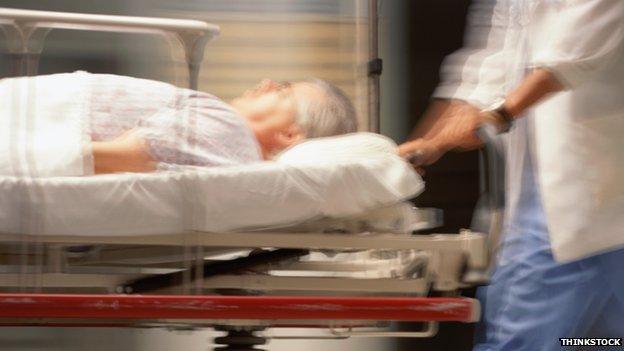
A group of the great and the good in the medical field has written a rather scathing open letter about the state of the NHS.
According to the authors of the letter, published in the Independent, external, there is widespread evidence of NHS and social care services "buckling under the twin crises of rising demand and flat-lining budgets".
It is worth quickly reviewing why everyone is so worried.
The first, basic point is that NHS funding has, in effect, been frozen since 2010.
Scientific developments
It has not been cut, but, for people within the service, it might not feel like it.
That is because demand for healthcare is growing.
As we age, our population grows and science finds ways to fight more diseases, we can expect more people to want medical attention.
Here, for example, is a group of indicators of demand for NHS services in England, collated by Prof John Appleby, of independent health think tank the King's Fund.
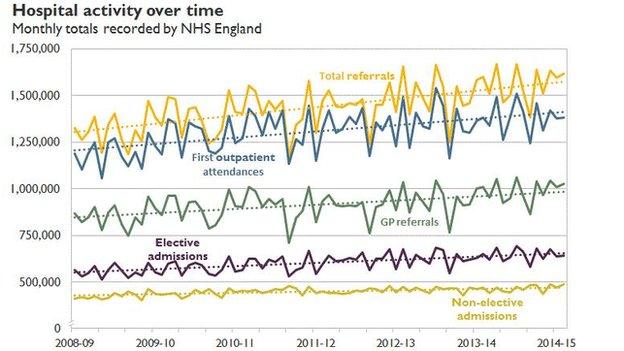
Everything is growing: there are about 250,000 more referrals to hospitals every month than there were five years ago.
At the same time, healthcare costs are tending to rise faster than inflation.
That is why living within a flat NHS budget is so difficult.
To keep the show on the road, NHS England has had to find £20bn of efficiency savings since 2010 to take effect by next year, when its budget will be about £100bn.
But that's just the start.
Uptick in demand
Last year, NHS England estimated that if it gets the same real-terms budget, it will need to find another £30bn in savings by 2021.
The cost of dementia alone to the NHS and local authorities will hit £23bn per year by 2021.
And, in truth, it's worse than that.
This year, the NHS has experienced an unexpected uptick in demand.
This graph shows the weekly tally of people admitted to hospital from A&E for each week of the year so far.
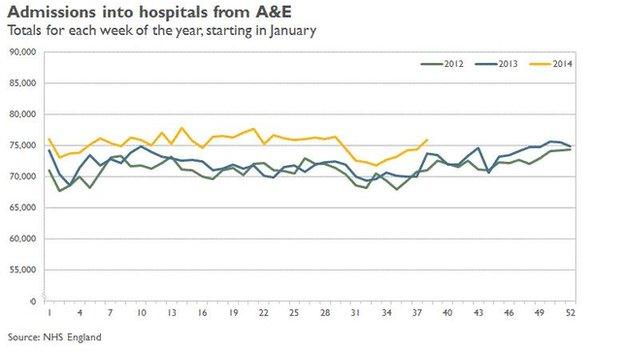
Remember, these are people who have turned up to hospital, and who need to be kept in for treatment or observation.
You can see that the fall in admissions that tends to occur as spring turns to summer did not happen.
The lines never cross: in not one week has demand fallen to the same levels as last year.
Patients sicker
The reminders that people should get flu jabs, issued on Monday, is also a reminder that winter is coming - and we are already at what was, last year, mid-December levels of activity.
So there has been a substantial rise on last year.
It is particularly peculiar because there has not been much of an increase in people actually pitching up at hospital emergency rooms.
The average patient is just sicker.
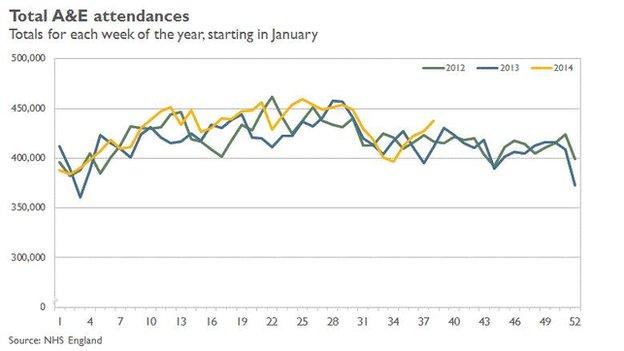
So more genuinely sick people are going to accident and emergency rooms and no-one quite knows why.
The King's Fund has commissioned a project that hopes to find out why.
The leading theory within the Department of Health is that it might be to do with reductions in adult social care provision - local government, which does most of that work, has been cut very deeply.
It affects services from residential care through to meals on wheels.
The premise of that theory is that vulnerable people are no longer staying healthy within their homes and so they are drifting into hospitals.
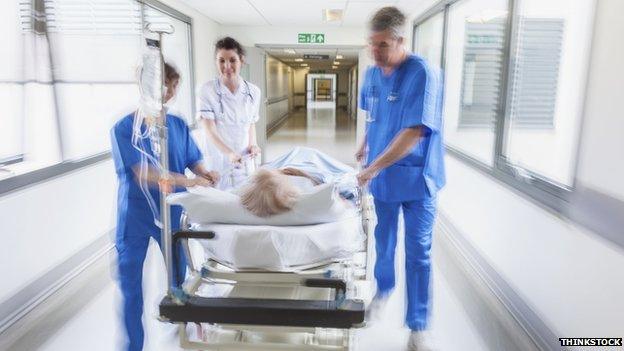
The really big question is whether this year's demand spike is a one-off and will drop off again, or whether this rise - or rate of increase in demand - might be the future.
So things are tough in the long term, and you can see why the major parties' promises not to cut the NHS are less dramatic than they seem.
I am not sure they even could.
In fact, at the moment, Department of Health officials are worried that they will not even be able to stay within their budget for this year.
The question within the civil service is not about whether the department's budget will rise, it is about how much and when.
- Published6 October 2014
